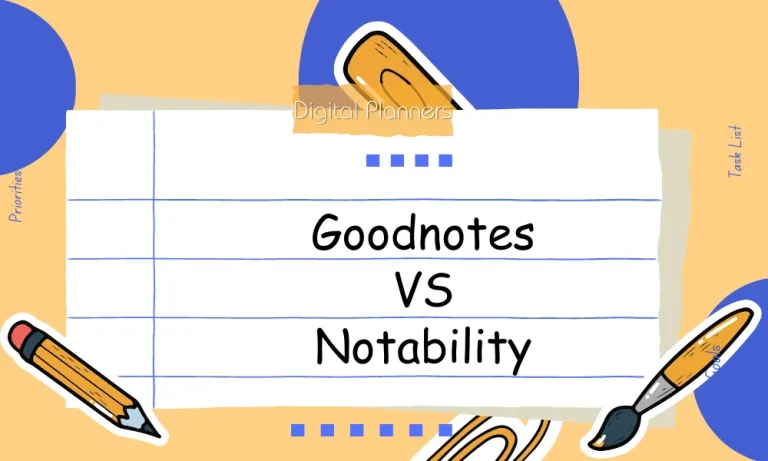Struggling to stay organized and motivated during lockdown? Look no further than your trusty planner! In this guide, we’ll explore how you can effectively utilize your planner to navigate through these challenging times. From setting goals to tracking self-care, discover the power of planning in surviving and thriving during lockdown.
Benefits of Using a Planner During Lockdown
In times of uncertainty and disruption, maintaining a sense of routine and structure becomes crucial. Using a planner can be a powerful tool to help navigate the challenges of lockdown and provide numerous benefits for overall well-being.
Maintaining Routine and Structure
One of the key benefits of using a planner during lockdown is the ability to maintain a sense of routine and structure.
With many regular activities disrupted, having a planner helps you establish a daily schedule, and allocate time for work, leisure, self-care, and other essential tasks. This structure can provide a sense of normalcy and stability, reducing feelings of chaos or aimlessness.
Reducing Stress and Anxiety
The uncertainty and isolation of lockdown can lead to increased stress and anxiety. Using a planner can help alleviate these negative emotions by providing a sense of control over your time and priorities.
By organizing tasks, setting deadlines, and breaking down larger goals into manageable steps, a planner allows you to approach each day with clarity and focus, reducing overwhelm and promoting a sense of accomplishment.
Setting Realistic Goals and Tracking Progress
Lockdown can make it challenging to stay motivated and work towards personal or professional goals. A planner can be a valuable tool for setting realistic goals and tracking your progress.
By breaking down larger goals into smaller milestones, you can celebrate small victories and stay motivated. Seeing your progress visually in the planner can boost confidence and provide a sense of fulfillment, even during challenging times.
Choosing the Right Planner
Finding the perfect planner that suits your individual needs and preferences can be a game-changer in staying organized and productive.
With so many options available in the market, it’s essential to consider several factors when selecting a planner.
Tips for Selecting a Planner
When choosing a planner, it’s important to consider your personal preferences and requirements. Think about how you like to organize your tasks and schedule, whether you prefer a digital or physical planner, and if you need any additional features like goal setting or habit tracking. Take some time to research and read reviews to find a planner that aligns with your needs.
Types of Planners
The market offers a wide variety of planners to cater to different planning styles. Daily planners are great for individuals who prefer a detailed view of each day, allowing for minute-by-minute planning.
Weekly planners provide a broader view of the week, with ample space for tasks and appointments. Monthly planners offer a big-picture perspective, ideal for long-term planning and goal setting.
Consider your planning style and the level of detail you need when choosing the type of planner that suits you best.
Key Features to Consider
Size, layout, and additional sections are essential features to consider when selecting a planner. The size of the planner should be convenient to carry with you, whether it’s pocket-sized, compact, or standard.
The layout should be intuitive and easy to navigate, with enough space to jot down your tasks and notes.
Additional sections like goal-setting pages, habit trackers, or inspirational quotes can add value to your planning experience, so consider these features based on your preferences.
Setting up Your Planner
Once you have chosen the perfect planner, it’s time to set it up effectively to maximize your productivity and organization.
Setting up your planner in a thoughtful and personalized way can make a significant difference in how effectively you use it.
Maximizing Productivity and Organization
To set up your planner effectively, start by creating sections that align with your needs and priorities.
Begin with a daily schedule section, where you can jot down your appointments, meetings, and important deadlines.
Next, dedicate a section for to-do lists, where you can list your tasks and prioritize them. Consider adding a section for goal tracking, where you can set specific goals and track your progress.
You can also include sections for notes, habit tracking, or meal planning, depending on your preferences.
Step-by-Step Instructions
- Start by labeling the sections of your planner using sticky tabs or dividers.
- In the daily schedule section, write down your appointments and time-specific tasks.
- In the to-do list section, list your tasks for each day or week and prioritize them.
- In the goal tracking section, write down your goals and break them into actionable steps.
- Personalize your planner with colors, stickers, or motivational quotes to make it visually appealing and inspiring.
Personalization Ideas
To make your planner more personalized, use colors to categorize tasks or events. You can assign different colors to work-related tasks, personal commitments, or self-care activities.
Adding stickers or washi tapes can add a fun and creative touch to your planner. You can also include motivational quotes or affirmations to keep you motivated and inspired throughout the day.
Creating a Daily Routine
Establishing a structured daily routine is crucial for maintaining productivity and promoting mental well-being. A well-designed routine helps you stay organized, manage your time effectively, and achieve a balance between work and personal life.
Maintaining Productivity and Mental Well-being
A structured daily routine provides a sense of stability and predictability, which can significantly enhance productivity and mental well-being.
By allocating specific time slots for work, breaks, exercise, and leisure activities, you create a framework that helps you stay focused, manage your energy levels, and avoid burnout.
A well-balanced routine allows you to accomplish your tasks while also taking care of your physical and mental health.
Allocating Time Slots
To create an effective daily routine, allocate dedicated time slots for different activities. Start by designating uninterrupted blocks for focused work.
Breaks are essential for recharging and maintaining productivity, so schedule short breaks between work sessions.
Allocate time for exercise or physical activity to promote physical health and reduce stress. Additionally, make sure to include time for leisure activities, hobbies, and spending quality time with loved ones.
Integrating Self-care and Relaxation
Self-care practices and relaxation techniques are vital for overall well-being. Integrate self-care activities into your daily routine by allocating time for activities that nourish your mind, body, and soul.
This can include practices like meditation, journaling, reading, or indulging in a hobby. Prioritize activities that help you relax, unwind, and rejuvenate. Remember, taking care of yourself is essential for maintaining a healthy work-life balance.
Tracking Progress and Achieving Goals
During the lockdown, tracking progress and staying motivated becomes even more important as we navigate through uncertain times.
By monitoring our progress and focusing on our goals, we can maintain a sense of purpose and stay productive.
Significance of Tracking Progress
Tracking progress is crucial because it allows us to see how far we’ve come and provides a sense of accomplishment.
During the lockdown, when our routines may have changed, tracking progress helps us stay motivated and maintain a sense of direction. By monitoring our goals, we can make adjustments and celebrate small victories, which boosts our confidence and keeps us on track.
Methods for Tracking Goals
There are several methods for tracking goals that can be effective during the lockdown. Habit trackers are useful for monitoring daily or weekly habits, such as exercise, reading, or practicing a new skill.
Progress charts provide a visual representation of our progress over time, helping us identify patterns and areas for improvement.
Reflection pages allow us to assess our achievements, challenges, and lessons learned, fostering self-awareness and personal growth.
Staying Accountable and Adjusting Goals
To stay accountable, enlist the support of a friend, family member, or accountability partner who can check in on your progress and provide encouragement.
Additionally, break down your goals into smaller, manageable tasks, and set deadlines for each step. Regularly review your goals and make adjustments as needed. It’s important to be flexible and adapt to changing circumstances, especially during the lockdown.
Adjusting goals doesn’t mean giving up; it means being realistic and proactive in finding alternative paths to success.
Overcoming Challenges and Staying Motivated
Overcoming challenges and staying motivated during the lockdown can be tough, but with the right strategies, it’s possible to navigate through difficult times and maintain a positive mindset.
Common Challenges During Lockdown
Lack of motivation and feelings of isolation are two common challenges many people face during the lockdown. The disruption of routines and limited social interactions can take a toll on our motivation and overall well-being.
It’s important to acknowledge these challenges and seek effective ways to overcome them.
Strategies for Overcoming Challenges
Setting realistic expectations is key to overcoming challenges. Break down your tasks into smaller, manageable steps to avoid feeling overwhelmed.
Create a routine that includes activities you enjoy and find ways to stay connected with others virtually. Social support is crucial during these times, so reach out to friends, family, or online communities for encouragement and a sense of belonging.
Celebrating Small Victories and Practicing Self-Compassion
Celebrating small victories is essential to stay motivated. Acknowledge and reward yourself for accomplishing even the smallest tasks. This boosts your confidence and helps maintain a positive outlook.
Additionally, practicing self-compassion is crucial. Be kind to yourself and understand that it’s okay to have off days. Give yourself permission to take breaks and prioritize self-care.
FAQ: How to Use Your Planner to Survive Lockdown
How do I start using a planner effectively during lockdown?
Start by setting clear goals and priorities for each day. Use your planner to schedule specific tasks and allocate time for breaks and self-care activities.
Can I use a digital planner instead of a physical one?
Absolutely! Digital planners offer the convenience of accessibility across devices. Choose a planner app or software that suits your needs and preferences.
How do I stay consistent with using my planner during lockdown?
Make it a habit by incorporating planner time into your daily routine. Set reminders or alarms to prompt you to review and update your planner regularly.
What should I do if I fall behind on my planner during lockdown?
Don’t stress! Simply take a few minutes to catch up and adjust your schedule accordingly. Prioritize tasks and allocate time to complete missed or pending items.
Can I use my planner to track my mental well-being during lockdown?
Absolutely! Use your planner to journal your thoughts, emotions, and self-care activities. This can help you monitor your mental well-being and identify patterns or areas that need attention.
Conclusion
Using your planner to survive lockdown is a game-changer. It helps you stay organized, maintain a routine, and prioritize self-care. By utilizing your planner effectively, you can navigate through the challenges of lockdown with ease and make the most of your time at home. So grab that planner and take control of your days!



